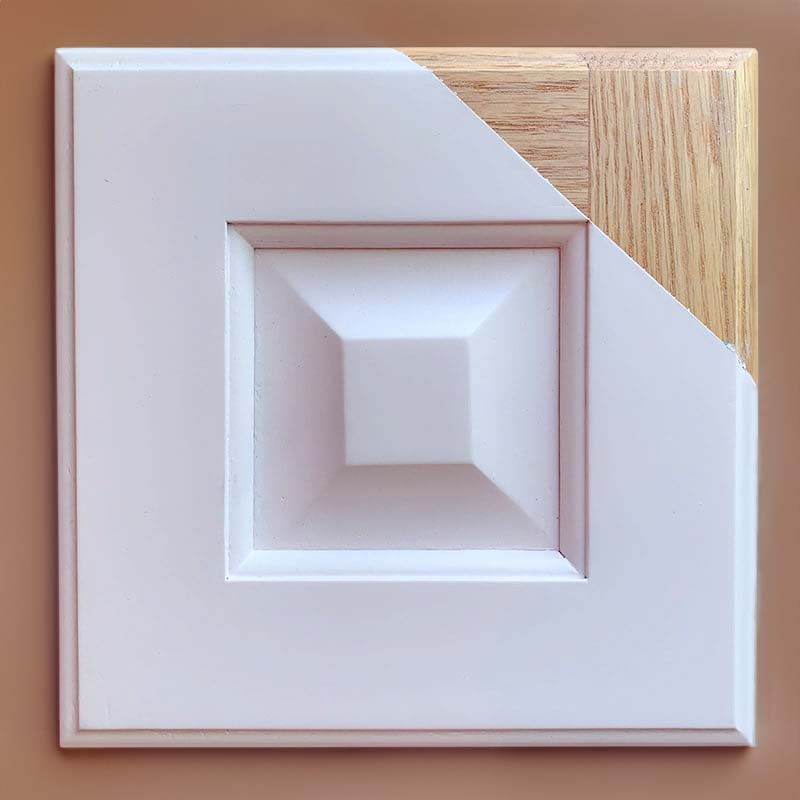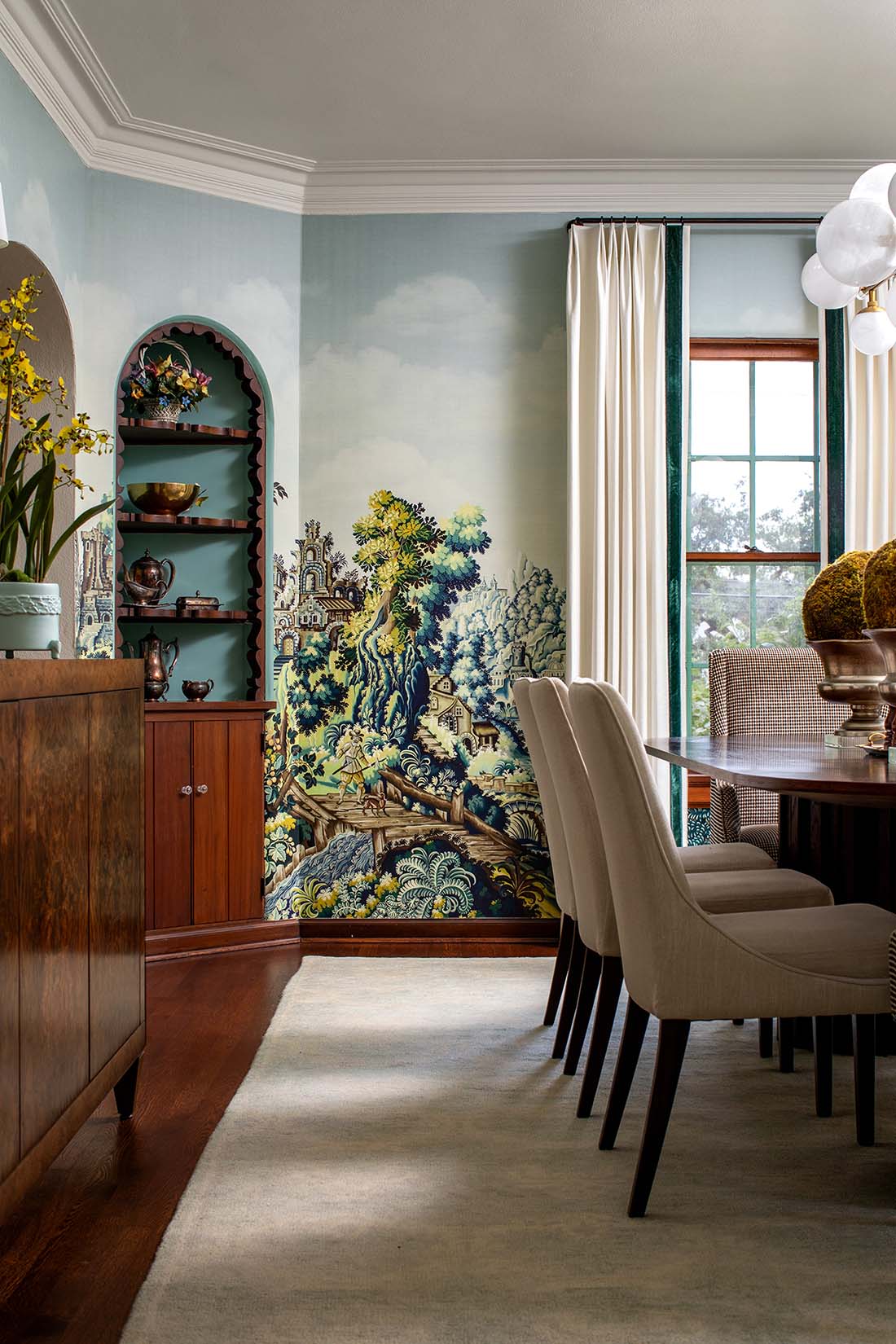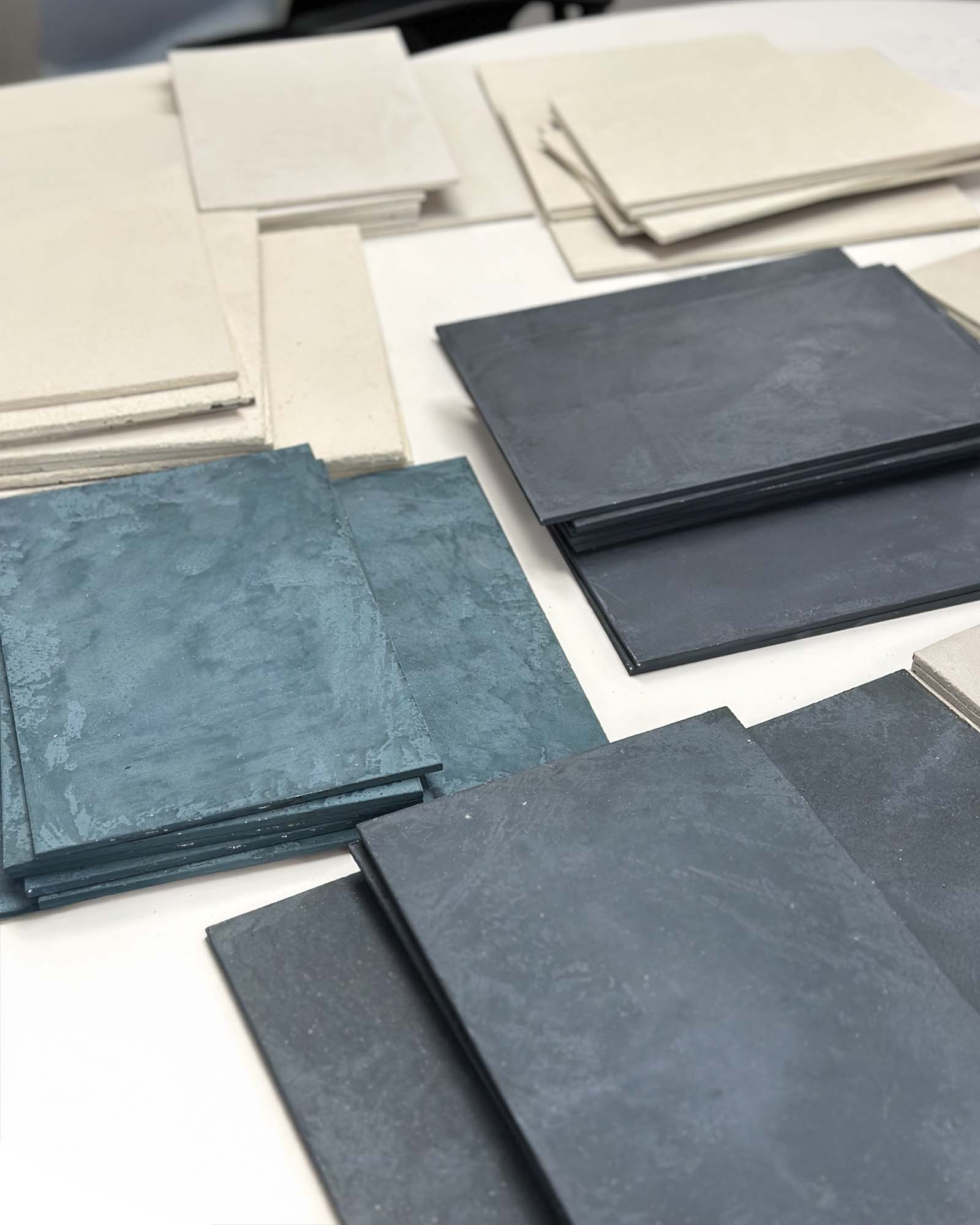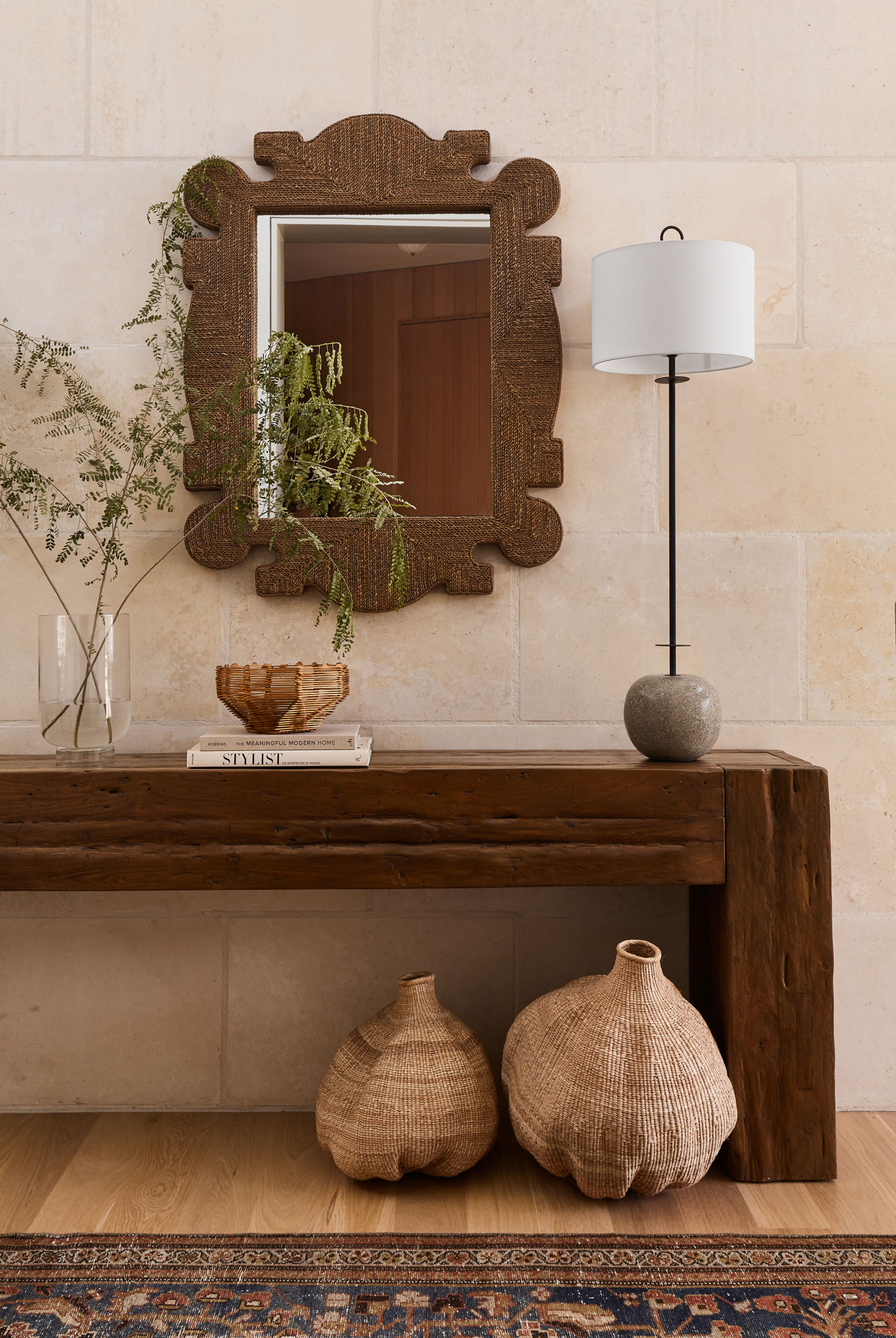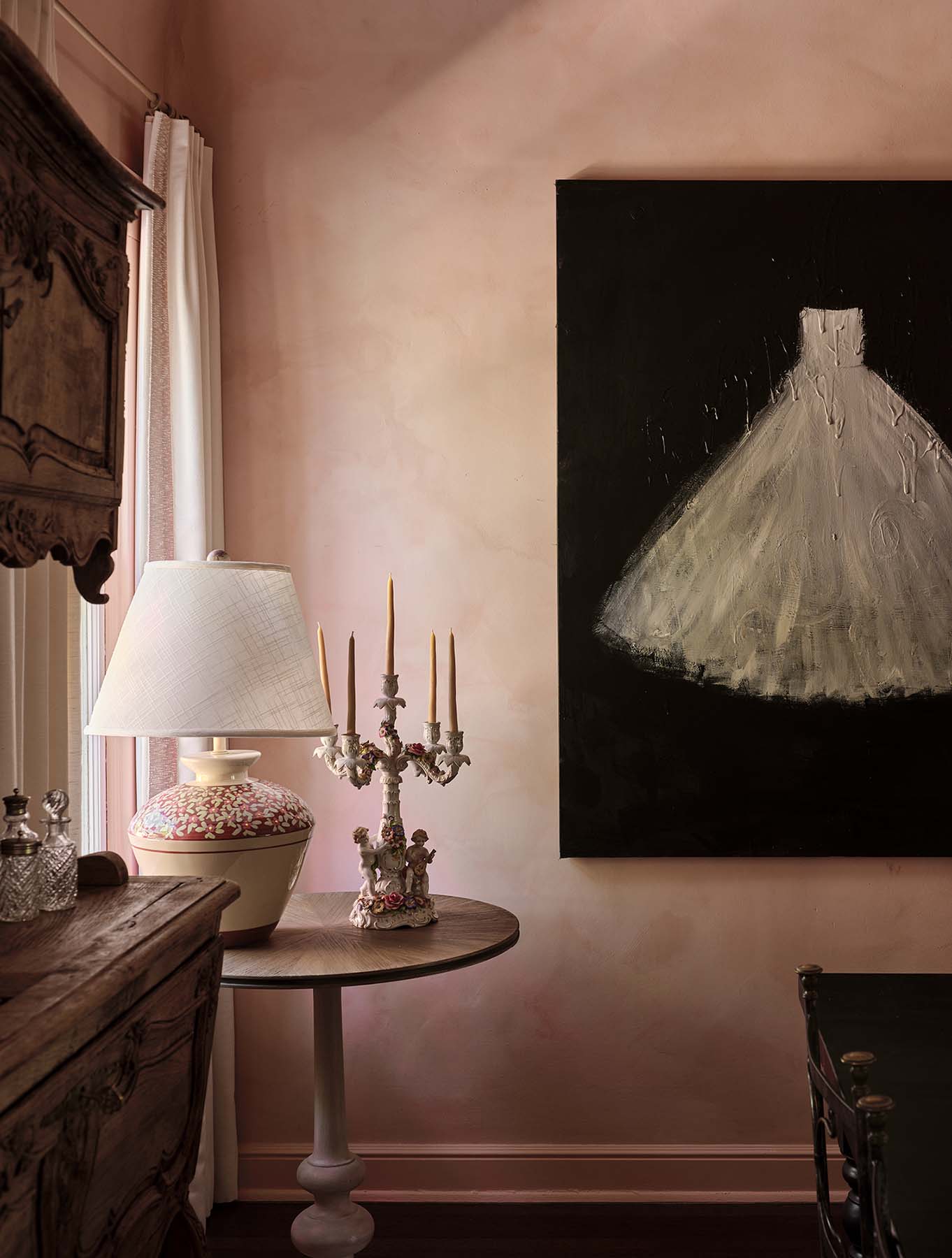Homeowners ask me all the time if they’ll still see the grain on painted cabinets, or whether they should just tear the old cabinets out and start fresh. Whether or not you’ll still see the grain is probably the number one factor that determines which direction their kitchen improvement project will take. If you have outdated oak cabinets and want to update your kitchen, you have two choices: you can replace the cabinets at a significant cost, or you can have them painted, which is far quicker and much more economical. Therefore the question about seeing wood grain on painted cabinets isn’t just about aesthetics, but also about budget and whether a dreaded (and costly) cabinet replacement is necessary. If homeowners can feel confident that they won’t see the grain on their painted cabinets, they usually choose this option. And the deciding factor – whether to paint their cabinets, or tear out and replace them – comes down to the particular painting company’s methods and skill in hiding the grain before painting. For a cabinet painter, the stakes for professional, flawless finishes have never been higher.
A quick look at wood grain
All cabinets are not created equal
There are many wood species that are commonly used for cabinets and furniture, and depending on the grain level of each species, the process for achieving that smooth, factory-like finish will vary. From the cabinet painter’s perspective, what matters is how smooth the wood feels to start with. Most wood falls into one of three categories: light grain, medium/heavy grain, or knotted.

“Light Grain” Wood Species
These types of wood cabinets are the easiest to paint and get a silky-smooth result. If your cabinets feel smooth to the touch already, they’re probably a fine-grained wood such as cherry or maple. They may have a visual pattern, but they’ll still feel smooth as a sheet of paper.

“Medium/Heavy Grain” Wood Species
This group includes golden oak, red oak, hickory, and walnut. Perhaps because the grain pattern is so heavy and visually dominant on these woods, and because their stained color is so strong (usually some variation of dark orange), homeowners seem to be the most eager to either paint or replace these design offenders, to completely transform and refresh the look and feel of their kitchen. Therefore these are the wood cabinets we paint most often. How do you know you have one of these types of cabinets? These woods don’t always feel paper-smooth to the touch, and you can feel the texture of the grain if you run your fingers across a cabinet door.

Knotted Wood Species
All species of wood have knots and natural dark spots and anomalies in some fashion. In species such as “knotty alder” and rustic hickory, those knots are much more prevalent and are considered a design “feature” of the wood. (Knotty alder cabinets were quite popular ten or twenty years ago but now . . . not so much.) The knots can be quite deep, almost like fissures, and give the wood a very distinctive look. Ironically, the rest of the wood surface, apart from the knots, can feel quite smooth!
Hiding the grain on painted cabinets
Most homeowners want their painted kitchen cabinets to look like new, like they were painted by the manufacturer with a factory finish that feels smooth to the touch. Otherwise, if you still see or feel the underlying grain underneath the layers of fresh paint, it’s a dead give-away that the cabinets were originally stained and then painted later, and not painted very well to boot. So the challenge for the professional cabinet painter is to make sure that the vast majority of the wood grain is undetectable after painting. How do you accomplish that?
Again, it comes down to the painter’s skill and technique, especially when dealing with heavier-grained woods. If the cabinets are smooth to the touch already, the task is easy. Almost any competent painter can spray a fresh finish on maple cabinets, for example, and make them look good. (The key is that the finish be sprayed. You don’t want roller marks or brush strokes on your painted cabinets!). In that case, all the painter needs is a good bonding primer, which is designed not to “fill” the grain but to stick to the smooth surface reliably. Any small dings or dents from wear and tear that weren’t filled by primer can be filled in with wood filler products. Then you spray on the final color, and you have smooth, like-new cabinets in the color of your choice!
But what if you have heavier-grained, more porous cabinets, such as red oak?
Dealing with that grain takes more effort than just painting fine-grained cabinets that are already smooth to start with. You need a way to fill the grain and get a smooth, paint-ready surface. We do this by applying multiple coats of primer with a high “solids” content, which is designed to settle in the grooves and pores. Then we sand the primed cabinets down with powder sanders with a fine-grit sandpaper. This removes 90 – 95% of the grain’s appearance, but it’s not a 100% fix. Some minimal grain may still be visible up close and in some lighting conditions, usually on the curved areas around the raised panels in the center of the cabinet doors. To totally remove all appearances of grain, we would hand-apply a wood filler in between primer coats, over any areas that the high-solids primer didn’t take care of. In some extreme cases, multiple layers of filler are required. And each layer has to dry fully and be sanded smooth. Needless to say, this takes more time and labor.
[Related: See our complete cabinet painting process here, including video]
So is filling 95% of the grain enough to make my cabinets look good after being painted?
The vast majority of homeowners say Yes! The flat areas of their cabinets (the doors and drawer fronts, plus the cabinet bases) are fully filled and end up paper-smooth by the time we’re done with them. This is more than enough to make your cabinets look amazing and totally transform your kitchen. For most of our clients, any minuscule grain that it still visible as a slight waviness, especially on those curved areas or edges, just isn’t an issue. But if you want ALL the grain removed, we can still do that! It would just add to the cost of your project, to account for the extra time and labor required to hand-fill every last bit of grain.
Here’s an example, using one of our very own painted cabinet door samples. Like all our samples, this door is made of red oak, which is very porous and grainy, and was a commonly-used cabinet material for homes build during the past few decades.

(By the way, isn’t it a nice pretty color? It’s Benjamin Moore’s 1366, “Rose Mist“.)
The wood was very grainy but now the flat painted areas, where we’ve applied two coats of our grain-filling primer and then sprayed the lacquer color, are silky-smooth to the touch.

Here’s a closer shot, taken from the side so you can see the grain more closely.
Now in both of these photos, if you zoom in, you can see tiny indentations either on the very edge of the door, or around the edge of the inset panel, where the grain wasn’t filled in 100%. This sample door is only 8 inches square, and you have to zoom in quite a bit and pay close attention to see the indentations, but they’re there. That’s what we mean by our process achieving a gorgeous result, with 95% of the grain filled in (closer to 99%, on this sample). Seen overall in a complete kitchen, the result would be beautiful, with any small areas of underlying grain barely noticeable unless someone was “looking”. We offer the option to manually fill in every last bit of grain or tiny indentation, but out of over a thousand projects we’ve done, I can count on one hand the number of times a homeowner has opted for the “Full Grain Elimination” option!
What if you have knotty alder or other knotted wood cabinets?
We can deal with those too, but they come with greater challenges. Because of the depth of these knots, addressing them requires many filler applications before they’re finally filled to satisfaction. In some cases three or four manual applications of wood filler are needed, along with dry times in between each application. Again, all this adds to the cost of your project. The good news is that it’s much cheaper than replacing your cabinets would be!
[dropcap color=”red” background=”grey” style=”circle” size=”big”]W[/dropcap]e bring fully-painted sample cabinet doors to our estimates and consultations, just like the ones you’ve seen here. They’re all done on red oak or other heavy-grained wood, so that you can see the amount of grain that’s filled, and the level of smoothness to expect for your own cabinet painting project. We’re very proud of our smooth, lovely painted samples!

[Color on our 12″ sample: Benjamin Moore’s 1661, “Graytint“.]
Hopefully this gives you a good sense of what to expect when you get your grainy cabinets painted! In our experience, the grain on painted cabinets is a non-issue, because it’s almost entirely eliminated and all anyone will see is the lovely, smooth new finish on your updated kitchen cabinets.

